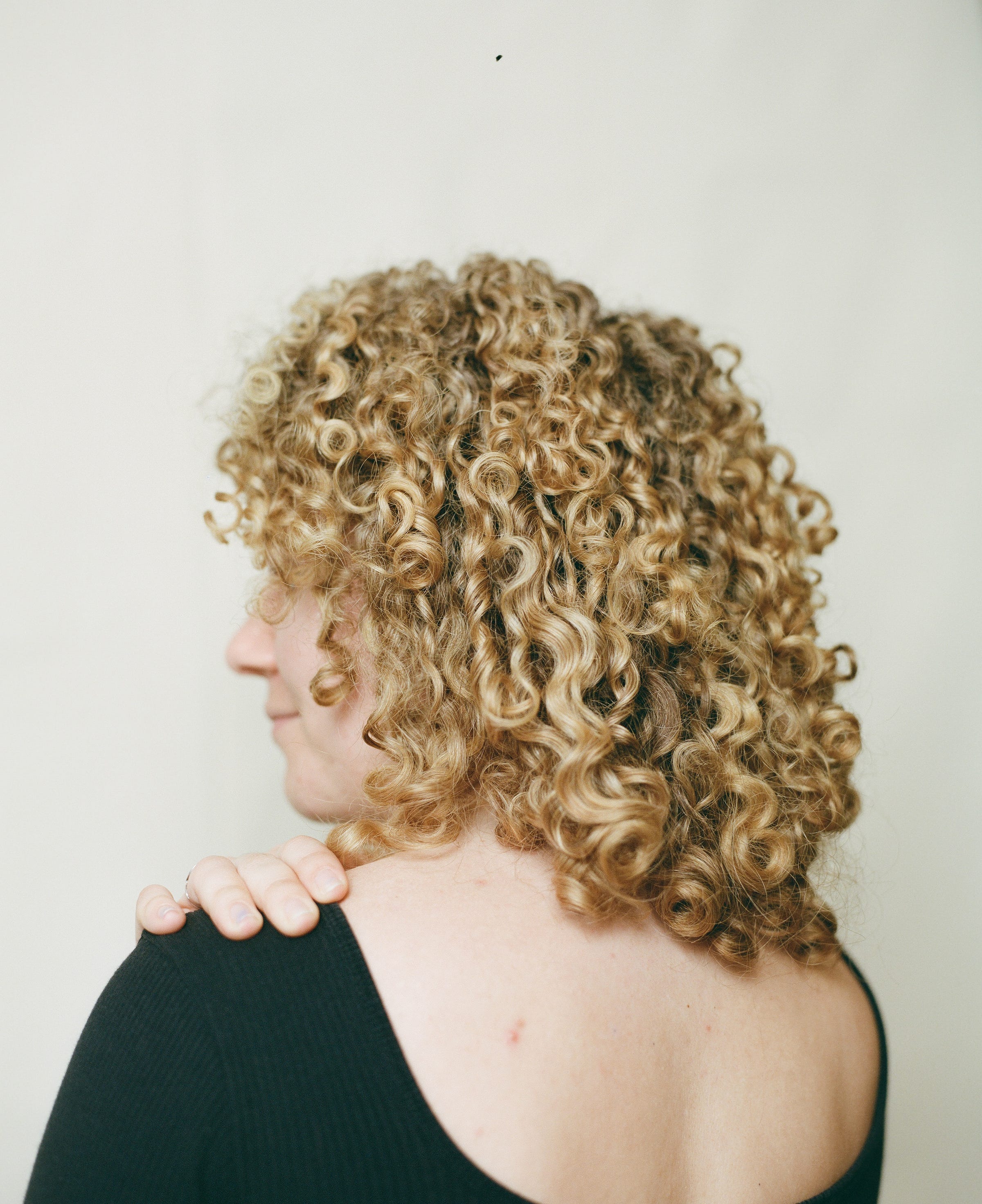I first started straightening my hair when I began high school. Before then, my hair had always been in one tight plait, with a pretty headband placed on top. That was my signature. When I was finally allowed to wear my hair down, I had no idea what to do with it. Straightening it became the obvious and only solution, and that way, my hair could finally look like everyone else’s.
It wasn’t until the age of 15, when my mum refused to straighten my hair for me any longer, that I started to wear it naturally again. The only problem was, I had no idea where to start. Neither my mum or sister have curly hair, so YouTube became my saviour. Yet, even then, I could never find someone who had the same type of hair as me. I’d spent so long wishing my curly hair looked as perfect and defined as everyone else's, that I forgot to find what was right for my hair.
Now, nearly a decade later, after experimenting with lots of different products and techniques, I’m yet to figure out the perfect routine for me. To be honest, I don’t know if I ever will. If you have curly hair, you’ll know it’s always changing and never the same, so just when you think you’ve got the perfect routine, you’re proven wrong.
The difference between me now and my 15 year old self isn’t how my hair looks, but how I feel about my hair. I love it. And I hate it. But most of the time I love it, and it's become part of how I express myself - I’m not me without my curly hair, it just took me some time to realise that.
This photo essay spotlights women with experiences similar to mine. Although their journeys are all just as unique and personal as their hair, what they have in common is a desire to accept their natural hair, and the type of person their curls allow them to be - without moulding to the Eurocentric standards of beauty that society has created. Hair is a part of our identity, and we can’t keep pretending to be someone we’re not.
If my younger self could read this, I’m sure she’d be proud of how far we’ve come.
Diba Jedo
Saduni
“Whenever I went on YouTube, I only found how to take care of White European hair or Black hair. There wasn't a lot on South Asian hair, and I would find myself writing all these descriptions to find at least one South Asian girl. I went from going to Paks for really thick products and realising that doesn't work for me, to going to Boots and finding really lightweight and quite damaging products, to now being in the middle of using oils and going back to my roots. I ended up using both extremes as a medium…It feels kind of powerful to reclaim my identity through my hair.”
Rachael
“I have cousins that do have the same hair texture, but they haven't gone the same route I have, so it is a bit different and it feels like I'm going on this journey alone, even though I kind of want to be with other people…I’d say I would want to feel whole. Not that I don't feel whole now, but I just want to feel more in my body, feel more connected to myself, and to my family as well.”
Gabriella
“I used to think if I had straight hair, I wouldn't be bullied, and if I wasn't mixed race, I wouldn't get bullied. My hair was the most obvious indicator to people in Norfolk that I wasn't white, and my hair is literally my identity and still is. It’s taken years of experimenting and researching. I feel like I am an expert! I would say my curly hair journey has been about appreciating my natural hair, being proud of my heritage, and building knowledge around the right products. All this has been done with having the right people around me to help me learn, from friends to hairdressers.”
Obioma
“All I’d previously known of my hair was whatever my mum had decided to do to it. I remember sitting in between her legs, often crying, as she combed and brushed through it. Relaxing seemed like the only suitable choice. It burned and itched but it was much easier to handle. A benefit of doing my own hair now has been in thinking of the skills I would be able to pass onto my children in the future. Although doing my hair as a child was often painful and uncomfortable, it was also a key bonding moment that I look forward to having with my own children someday.”
Sahmira
“All three of my daughters have completely different texture and colours in their hair, and they notice it, and they pay attention to it. There's an innocence in the natural joy of enjoying themselves and their hair. If you say to them ‘You're pretty, you look good’ they’ll say ‘Yeah I know, thank you’. That's what I want. That's all I wanted, and their hair plays a massive part of that and their identity, and it took me to have them to know that too. It sounds really cliché, but it's true.”
People want to love their hair. Today, the curly hair movement has made great strides in fostering a sense of acceptance and pride in naturally textured hair, but there’s still a way to go. Brands could, and should, be doing more. They still often misunderstand the diversity of curly hair experiences, when they could play a much bigger role in supporting people through their curly hair journeys. To find out more get in touch with Diba@themixglobal.com or Sam@themixglobal.com.
Photos by Florence Law












